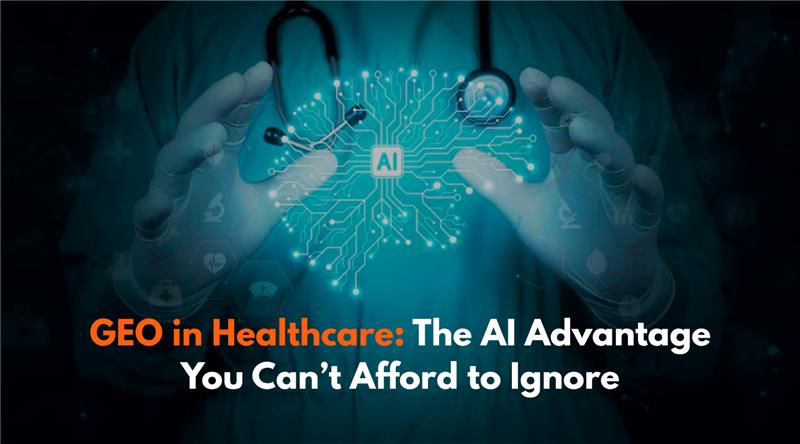Healthcare organizations worldwide are racing to harness the power of Geographic Information Systems (GEO) combined with Artificial Intelligence, and for good reason. Recent studies reveal that 89% of healthcare executives consider location-based AI solutions critical for their future success. This powerful combination is revolutionizing patient care, resource allocation, and public health management in ways previously unimaginable.
The integration of GEO AI in medical systems represents more than just a technological advancement—it’s a shift toward precision medicine and intelligent, location-aware care. It’s a fundamental shift toward precision medicine and data-driven healthcare delivery. Organizations that fail to adopt these innovations risk falling behind in an increasingly competitive and regulated industry.
Understanding GEO AI in Healthcare: The Foundation of Smart Medical Systems
Geographic Information Systems in healthcare involve analyzing spatial data to understand health patterns, disease distribution, and resource needs across different locations. When enhanced with artificial intelligence, these systems become incredibly powerful tools for predictive analytics and real-time decision-making.
AI-powered GEO systems process vast amounts of location-based health data, including patient demographics, disease prevalence, environmental factors, and healthcare facility locations. This comprehensive analysis enables healthcare providers to make informed decisions about where to allocate resources, how to prevent disease outbreaks, and when to intervene in specific geographic areas.
The technology combines machine learning algorithms with spatial analysis to identify patterns that human analysts might miss. For instance, AI can detect early warning signs of disease clusters by analyzing patient visits, symptoms, and geographic proximity simultaneously.
5 GEO AI in Medical Systems Applications Transforming Healthcare Delivery
1. Epidemic Surveillance and Disease Prevention
Modern GEO AI systems excel at tracking disease patterns and predicting outbreaks before they become widespread. Healthcare organizations use these tools to monitor infectious diseases, chronic conditions, and environmental health risks across different geographic regions.
The Centers for Disease Control and Prevention reports that AI-enhanced geographic surveillance systems can reduce outbreak response time by up to 65%. These systems continuously analyze data from hospitals, clinics, laboratories, and even social media to identify unusual health patterns.
Furthermore, predictive modeling helps public health officials allocate vaccination resources, deploy mobile health units, and implement targeted prevention programs in high-risk areas. This proactive approach saves both lives and healthcare costs.
2. Optimized Healthcare Resource Allocation
AI-powered geographic analysis revolutionizes how healthcare systems distribute resources. Hospitals and clinics can now use predictive analytics to determine optimal staffing levels, equipment placement, and service offerings based on geographic demand patterns.
Studies show that healthcare organizations using GEO AI for resource planning achieve 34% better efficiency in resource utilization. The technology analyzes population density, demographic trends, transportation patterns, and historical healthcare usage to recommend strategic decisions.
Additionally, emergency medical services benefit tremendously from geographic AI. Ambulance dispatch systems now use real-time traffic data, hospital capacity information, and patient severity algorithms to determine optimal routing and destination hospitals.
3. Personalized Care Through Location Intelligence
Geographic AI enables healthcare providers to deliver truly personalized care by considering patients’ environmental contexts. The technology analyzes factors such as air quality, socioeconomic conditions, access to healthy food, and proximity to healthcare facilities.
This comprehensive approach allows physicians to make more informed treatment decisions. For example, a patient living in an area with high air pollution might receive different asthma management recommendations than someone in a cleaner environment.
Moreover, care coordinators use geographic insights to connect patients with appropriate community resources, transportation assistance, and local support groups, creating a more holistic care experience.
4. Advanced Chronic Disease Management
Chronic diseases like diabetes, heart disease, and hypertension often cluster in specific geographic areas due to environmental, socioeconomic, and lifestyle factors. GEO AI helps healthcare providers identify these patterns and develop targeted intervention strategies.
Research indicates that geographic-based chronic disease management programs show 42% better patient outcomes compared to traditional approaches. AI algorithms analyze lifestyle factors, environmental conditions, and social determinants of health to create location-specific treatment protocols.
Population health managers use these insights to establish community health programs, partner with local organizations, and address underlying causes of chronic disease in specific geographic areas.
5. Enhanced Emergency Response and Disaster Preparedness
When natural disasters or public health emergencies strike, GEO AI systems provide critical support for emergency response coordination. These systems analyze real-time data about affected populations, available resources, and infrastructure damage to optimize response efforts.
Emergency management teams use geographic AI to predict which areas will need the most support, identify safe evacuation routes, and coordinate resource distribution. The technology significantly improves response times and reduces chaos during critical situations.
Overcoming Implementation Challenges: Your Roadmap to Success
Data Integration and Quality Management
Successfully implementing GEO AI requires integrating data from multiple sources, including electronic health records, government databases, environmental monitoring systems, and social media platforms. Healthcare organizations must establish robust data governance frameworks to ensure accuracy and reliability.
Data standardization becomes crucial when combining information from different sources. Organizations need to invest in data cleaning tools and establish quality control processes to maintain the integrity of their geographic health databases.
Privacy and Security Considerations
Geographic health data presents unique privacy challenges because location information can be highly sensitive. Healthcare organizations must implement advanced encryption, access controls, and anonymization techniques to protect patient privacy while enabling valuable analysis.
Compliance with regulations like HIPAA requires careful consideration of how geographic data is collected, stored, and shared. Organizations should work with legal and compliance teams to develop appropriate policies and procedures.
Staff Training and Change Management
Successful GEO AI implementation requires comprehensive staff training programs. Healthcare professionals need to understand how to interpret geographic insights and incorporate them into clinical decision-making processes.
Change management strategies should focus on demonstrating the value of geographic AI to different stakeholders. Physicians, nurses, administrators, and public health officials all need to understand how the technology benefits their specific roles.
Measuring Success: Key Performance Indicators for GEO AI Initiatives
Healthcare organizations should establish clear metrics to evaluate the success of their GEO AI implementations. Important indicators include reduced disease outbreak response times, improved resource utilization rates, enhanced patient satisfaction scores, and decreased healthcare costs per capita.
Patient outcome improvements provide the most meaningful success measures. Organizations should track changes in preventable hospitalizations, the effectiveness of chronic disease management, and population health indicators in areas where GEO AI insights drive interventions.
Financial metrics also matter significantly. Healthcare systems should monitor cost savings from optimized resource allocation, reduced emergency response times, and improved preventive care delivery.
Future Trends: What’s Next for GEO AI in Healthcare
The future of geographic AI in healthcare looks incredibly promising. Emerging technologies like Internet of Things sensors, 5G networks, and edge computing will provide even more granular and real-time geographic health data.
Integration with wearable devices and mobile health applications will enable continuous monitoring of patient health in relation to their geographic environment. This capability will revolutionize preventive care and early intervention strategies.
Artificial intelligence algorithms will become more sophisticated, enabling the prediction of health outcomes with greater accuracy and farther in advance. Healthcare organizations that invest in these technologies now will be best positioned to benefit from future innovations.
Conclusion: Your Competitive Advantage Awaits
GEO AI represents a transformative opportunity for healthcare organizations willing to embrace innovation. The technology offers unprecedented insights into population health patterns, enables more effective resource allocation, and supports better patient outcomes through location-intelligent care delivery.
Healthcare leaders who act now will gain significant competitive advantages over organizations that delay implementation. The evidence is clear: geographic AI is not just a nice-to-have technology—it’s becoming essential for modern healthcare delivery.
The question isn’t whether your organization should adopt GEO AI, but how quickly you can implement these powerful solutions. Start by identifying specific use cases that align with your organizational goals, then develop a strategic implementation plan that addresses data integration, staff training, and performance measurement.
The future of healthcare is geographic, intelligent, and data-driven. Your patients, staff, and stakeholders are counting on you to lead the way.





